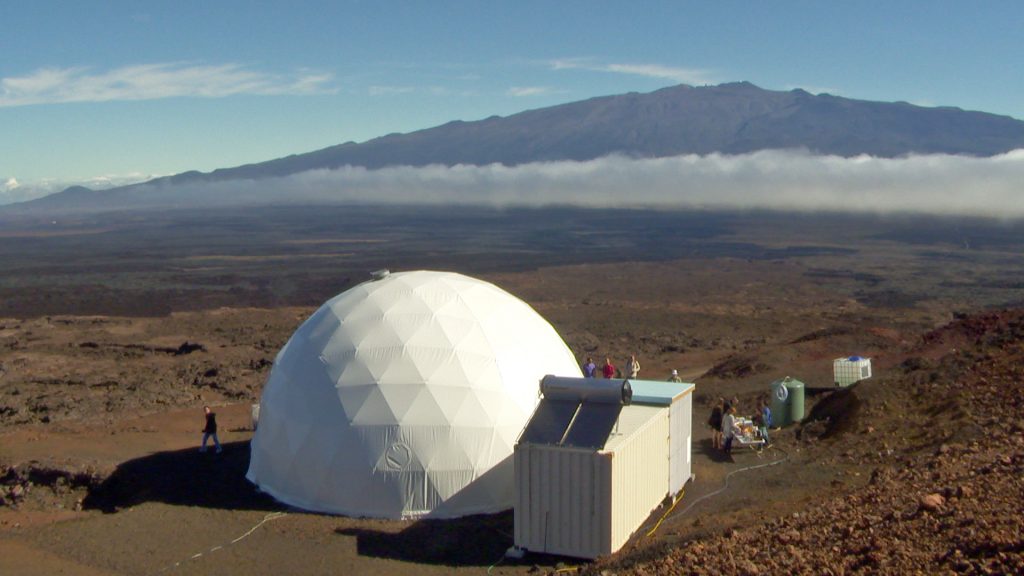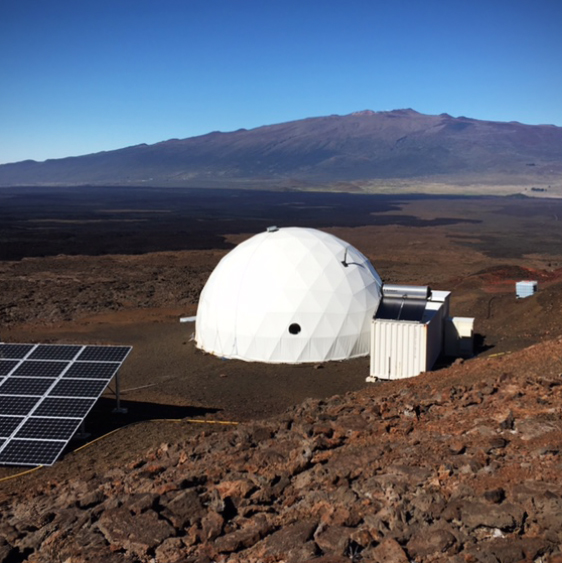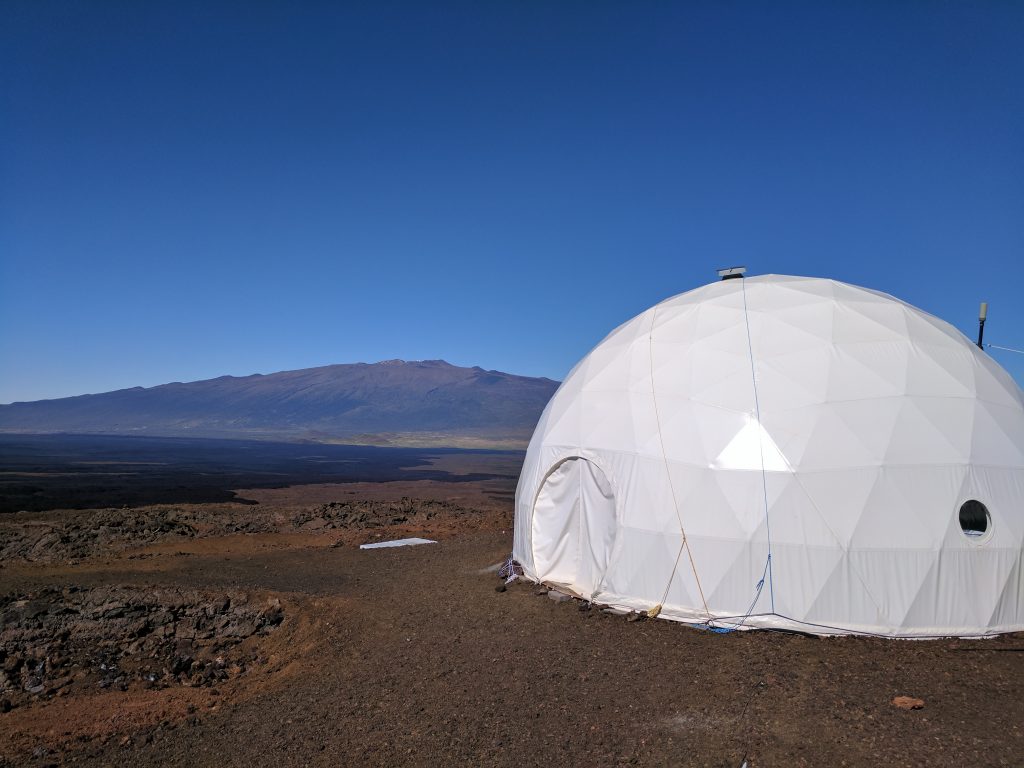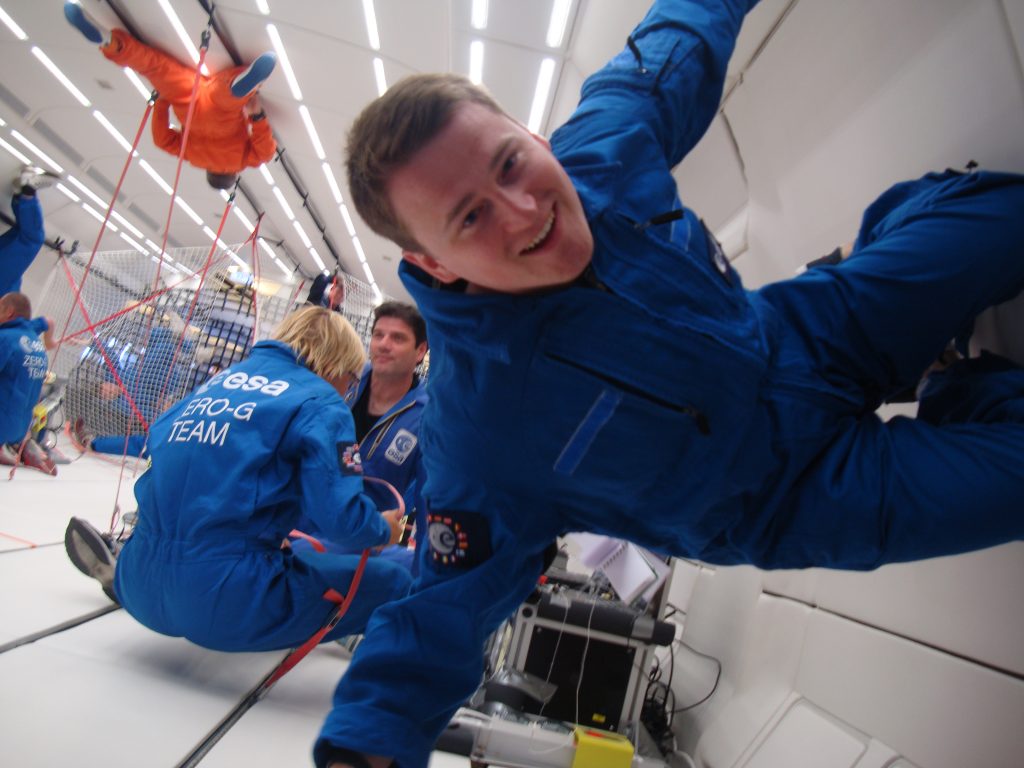Crew Enters Mars Habitat on Mauna Loa
At approximately 4:50 p.m. on Jan. 19, 2017, six astronaut-like crewmembers entered a geodesic dome located 8,200 feet above sea level on Mauna Loa on the island of Hawai‘i, which will serve as their home for the next eight months.
They are part of the University of Hawai‘i at Mānoa’s Hawai‘i Space Exploration Analog and Simulation (HI-SEAS) project, which has been operating long-duration planetary surface missions to investigate crew composition since 2012.
This is the fifth in a series of HI-SEAS missions.
NASA funded HI-SEAS missions 2, 3 and 4 with a $1.2 million grant and has provided $1 million for missions 5 and 6 (scheduled for 2018).
“This is the best and most obvious place to do this research,” said Kim Binsted, HI-SEAS principal investigator and UH Mānoa professor, ” both because of the physicality—as you can see, it looks like weʻre on Mars—but also because of the range of expertise available at the University of Hawai‘i. We’ve got some of the world’s top planetary scientists. We’ve got some of the world’s top astronomers.”
The crew will be monitored by an experienced mission support team and will perform exploration tasks such as geological field work and life systems management. The conditions, such as delayed communication and partial self-sufficiency, are explicitly designed to be similar to those of a planetary surface exploration mission. Daily routines include food preparation from shelf-stable ingredients, exercise, scientific research, equipment testing and tracking resource utilization such as food, power and water.
In August 2016, HI-SEAS successfully completed its first one-year isolation mission, placing it in the company of a small group of analogs that are capable of operating very long-duration missions, such as Mars500, Concordia and the International Space Station.
For more information on HI-SEAS, visit www.hi-seas.org.
RELATED LINK
Crew Selected for ‘Mission to Mars’
UH Hilo, PISCES, NASA Prepare for Mars Mission
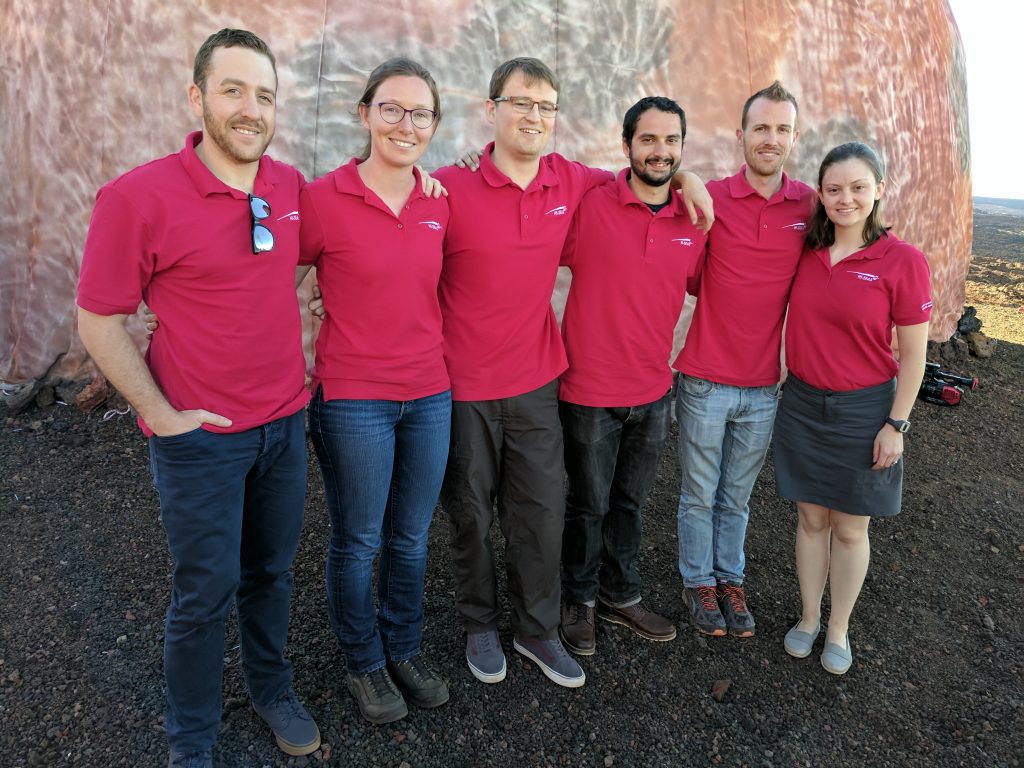
(L–R) Joshua Ehrlich, Laura Lark, Sam Payler, Brian Ramos, Jay Bevington and Ansley Barnard. HI-SEAS courtesy photo.







